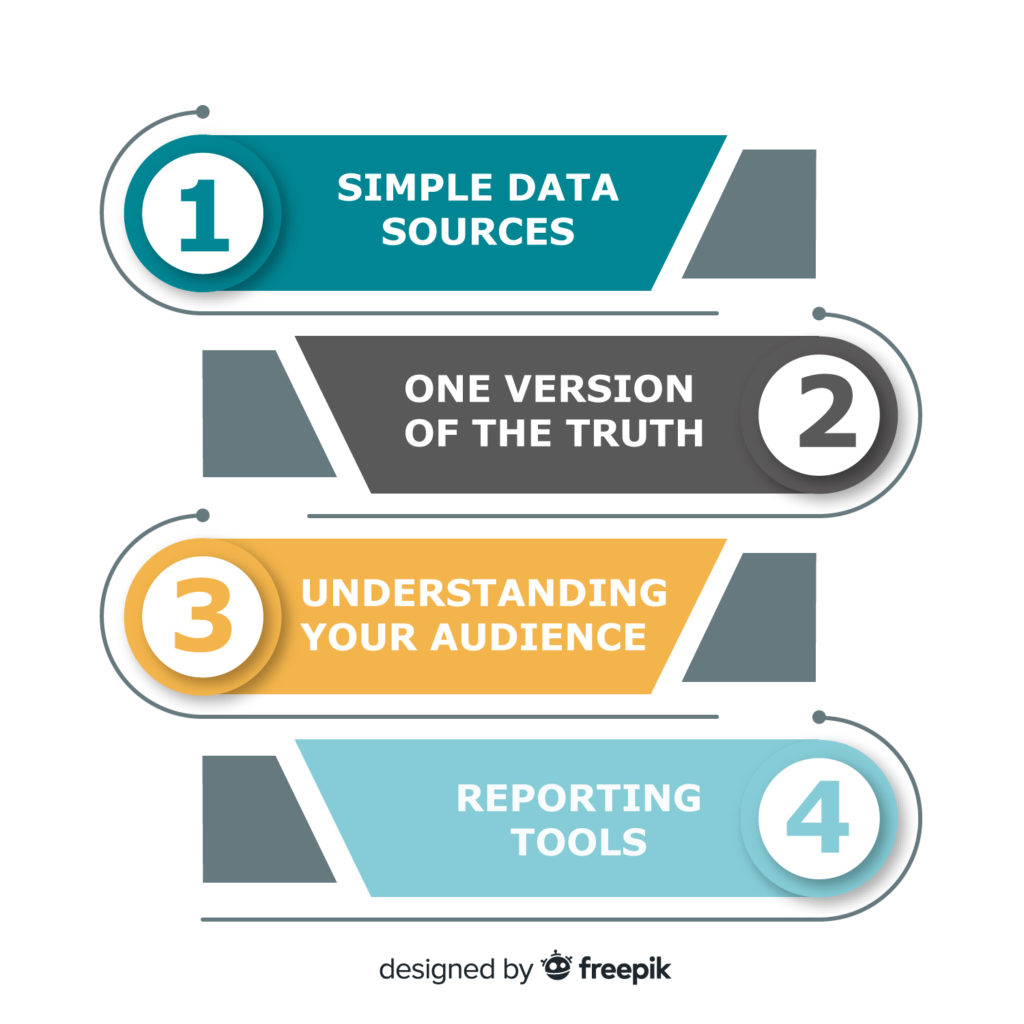Introduction
Both internal and external reporting can be seen as a both painstaking and time- consuming task at times – from the initial data collation all the way through to the decision on how to present the final report.
Based on several years of implementing CRM and ERP systems and working with non-profits to enhance all their reporting outputs, we have learned of the key areas which can make a difference to the quality of, and the way in which any kind of report is received by its intended audience.
This short guide will highlight the following areas of focus and provide guidance on how to get the most out of your reports.
- Simple Data source(s)
- One version of the truth
- Understanding your audience
- Reporting tools

This is by no means the definitive list but will form the structure to enable your reporting outputs to be a success.
Simple Data Sources
“A Report is only as good as the data provided” is a phrase commonly used across all sectors – and it’s absolutely correct.
The more data you have in your reports, the more you will get blinded by what does and doesn’t affect your final output.
Knowing what your final report needs to look like is a great starting point, then work backward to ascertain what data you actually need to have. Bringing across multiple data sources, creating links between the sources and then filtering out which you do and don’t need for your reports not only takes more time but increases the risk of you being caught in a blizzard of data.
Keep everything as simple as possible. If data is coming in from multiple sources, then ensure any joins/relationships are clean and defined. It may well mean to achieve what you want from your report(s), you may need to amend some of the data structures within your systems such as the Chart of Accounts or Donor records. If this is the case, then seriously consider doing so!
The cleaner the data sources, the more structured the data and the better the end report.
One version of the truth
There is nothing worse within organisations than when individual employees create their own reports, looking at the same area of the business but from different angles from different systems with differing objectives, and end up with different results.
This not only brings in question the validity of the reports themselves but also quickly will lose the confidence of your report audience, as they will deem any content as questionable.
Ensuring throughout your organisations that all reporting comes through the same channels is critical to avoid this. Work with all areas of your organisations to ensure all reporting needs are met and decide on the most appropriate way to report, and the individual/platform, to do so.
By making sure there is “one version of the truth” within your organisations, it allows for you to be collaborative, and for strategic decisions to be made with confidence.
Understand your audience
When creating reports, it is key to understand what your recipient is looking to achieve from the output. Internal day-to-day reports will, in the main, include a higher level of transactional detail compared to what you would provide for an executive, whereas SORP reporting compliance will drive the content of other reports.
It is essential to provide reporting data at the right level. Think about having groupings that allow for data to be sub-totalled with the option to expand if required. Try not to fall into the trap of making your report “one report fits all” – as it most certainly doesn’t.
For senior executives, consider creating dashboards or use highly visual report layouts including KPI “Traffic Lights”. These draw the recipients’ eye to data spikes or values which need to be highlighted and provide snapshots of summarised information.
Reporting Tools
A common limitation on reporting capabilities isn’t the user themselves, but the reporting platform they have available to them.
Choosing the best reporting tool is a must and can be based on several factors. Always bear in mind that as organisations grow, your reporting requirements will grow too, so any tool you choose must be scalable.
If your organisations have data held in multiple systems, think of a reporting platform that allows for data to be held centrally. Also, if your reports take up a large amount of administrative time, consider systems that allow for automated data refresh – such as Microsoft Power BI.
Whatever tool you choose – make sure it fits your needs not only now but for the short to mid-term.
Summary
Taking time to consider each of the areas above will put you and your organisations on the right path for successful reporting.
On paper it’s very simple – know who you are providing the reports to, know what they need to include and away you go – but we all know it isn’t that easy.
Keeping the message that you need to “provide the right information, to the right people, at the right time” firmly in your mind through your full reporting process will ensure you don’t lose key organisational information in the middle of unnecessary data.
Should you wish to discuss any of your reporting requirements with us, please do not hesitate to do so.
Authored by Daniel Booth




